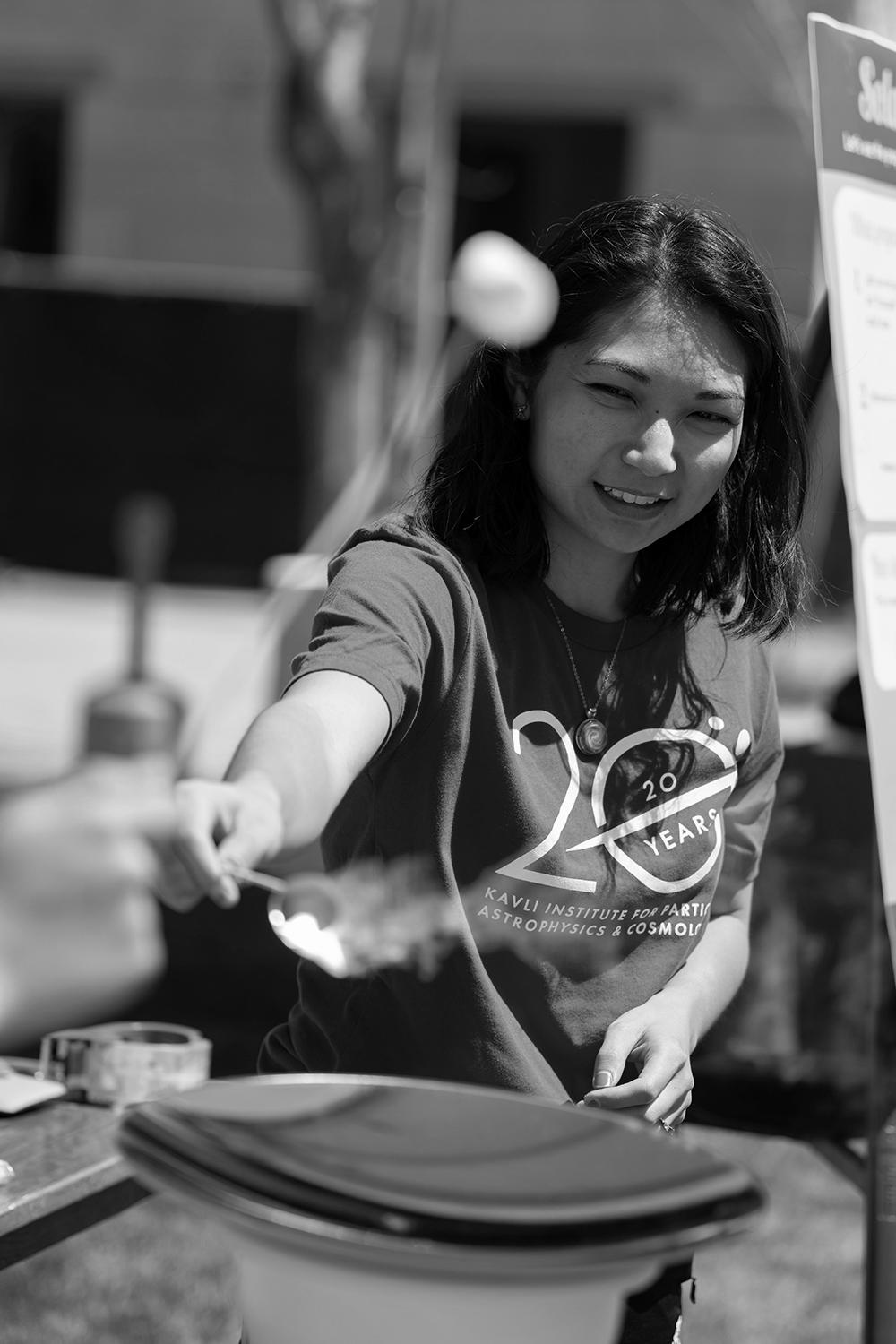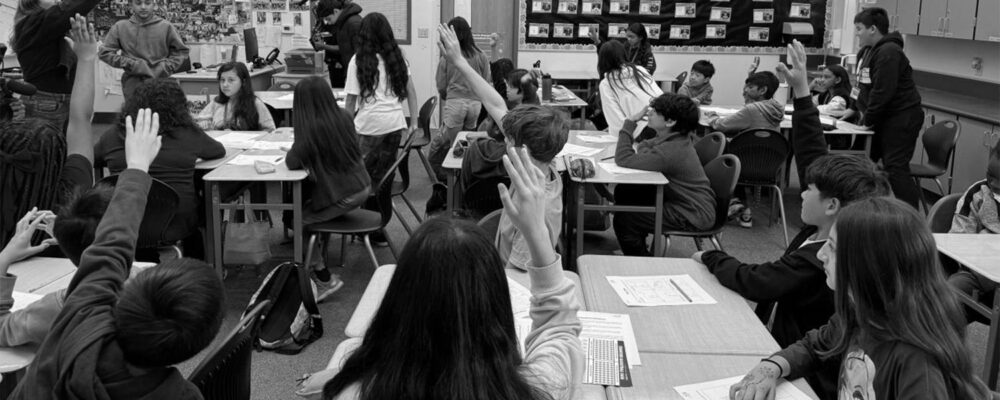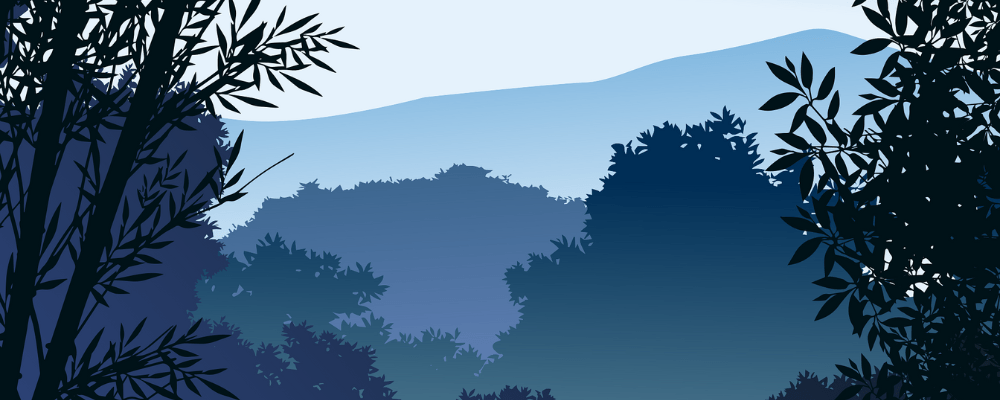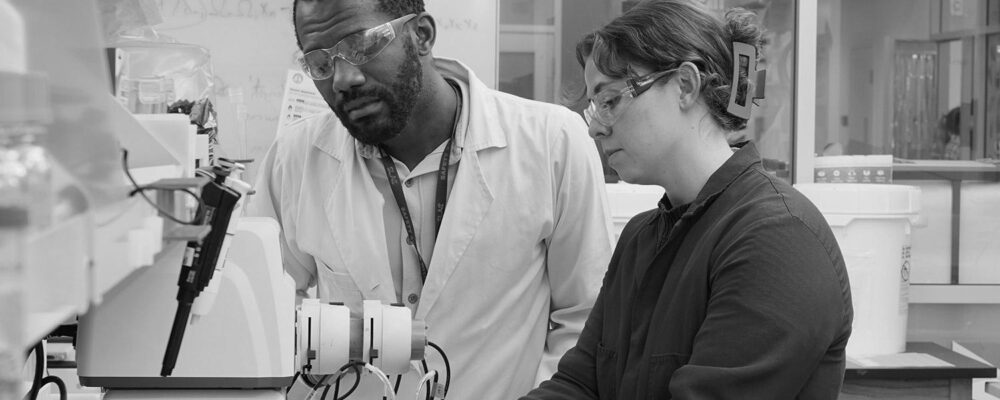The Kavli Institute for Particle Astrophysics and Cosmology (KIPAC) invites community members of all ages to the KIPAC + Friends Community Day on Saturday, April 19, from 1 to 5 p.m. This year’s event will be bigger and better than ever, thanks to involvement from KIPAC scientists and colleagues from across the Stanford science and engineering communities.
“So many of us in KIPAC were inspired to study science because of a spark we caught as children, an amazement at the wonders of the universe,” said Risa Wechsler, director of KIPAC and professor of physics in the School of Humanities & Sciences. “I hope everyone who joins us on Saturday will walk away with a sense of the enthusiasm and excitement we all feel about our work to understand how the universe works.”
The Community Day event is at the Stanford University Science and Engineering Quad and the Hewlett Teaching Center, and will feature a wide variety of fun science activities and demonstrations – including a hands-on tour of the cosmos presented by KIPAC scientists – and quick science lectures on everything from nanotechnology to galaxy clusters. There’s even a chance to win a piece of meteorite, donated by the NASA Solar System Exploration Research Virtual Institute (SSERVI). While not required, online registration is strongly encouraged.
KIPAC + Friends bring science to life
At the Community Day, KIPAC volunteers will cover topics including distant galaxies, sunspots and solar prominences, comets in our solar system, and hard-to-detect phenomena, such as cosmic magnetism and dark matter.
KIPAC’s friends in the lineup include Stanford volunteers from Aeronautics and Astronautics, nano@stanford, Materials Science and Engineering, Electrical Engineering, and Mechanical Engineering. From beyond Stanford, representatives from Lick Observatory, the NASA Solar System Exploration Research Virtual Institute (SSERVI), the SETI Institute, and SLAC National Accelerator Laboratory will bring new energy to the Community Day this year with demonstrations of more earthly technologies.
SaM Fontejon / Fontejon Photography, Inc.
Daniel Troyetsky and Lauren Simitz, graduate students in the Stanford Aeronautics and Astronautics program, will bring glowing plasma globes to explain physics and electromagnetism. They will also demo a variety of bottle rockets, wind-up rovers, and gliders as examples of technology that can take humans to space. Focusing on the smallest of the small, nano@stanford’s Daniella Duran and a group of materials science and engineering graduate students will show how a scanning electron microscope sees down to the finest details. Using simple iron filings, KIPAC graduate student Minjie Lei will describe how magnetism works on the cosmic scale to shape our universe.
“Similar to iron filings, there are dust grains in space that spin around and align with magnetic fields,” Lei explained. “These dust grains are still too small to see, but they emit polarized light that we can see.” This light is reminiscent of the images in Vincent van Gogh’s famous painting, The Starry Night, Lei said.
Closer to Earth, KIPAC solar scientist Shea Hess Webber will use beads sensitive to the sun’s ultraviolet light to demonstrate why protecting your skin is so important. The sun will also play a starring role in daytime stargazing, thanks to solar telescopes operated by the Stanford Solar Group, Stanford Astronomical Society, Lick Observatory, and the SETI Institute. Visitors will be able to safely view the sun through specialized filters that expose dynamic features like sunspots and solar prominences.
A fan favorite, the Solar S’mores booth will operate all day again this year, using solar energy to make sweet, gooey treats.
Sharing knowledge, excitement, and joy
Every scientist participating in Community Day – no matter what field they study – had the benefit of a teacher or mentor who exposed them to the wonder of science and helped them along the way. Now, they hope to light a spark of inspiration in members of the Stanford community who attend the event.
“We are excited that Stanford researchers and students are giving their time to share the magic of science discovery with Bay Area youth and families,” said Megan Swezey Fogart, senior associate vice president of community engagement at Stanford’s Office of Community Engagement. “We know this day of STEM outreach will provide family fun and undoubtedly inspire the scientists of tomorrow.”
“Stanford University, officially Leland Stanford Junior University, is a private research university in Stanford, California. The campus occupies 8,180 acres, among the largest in the United States, and enrols over 17,000 students.”
Please visit the firm link to site






